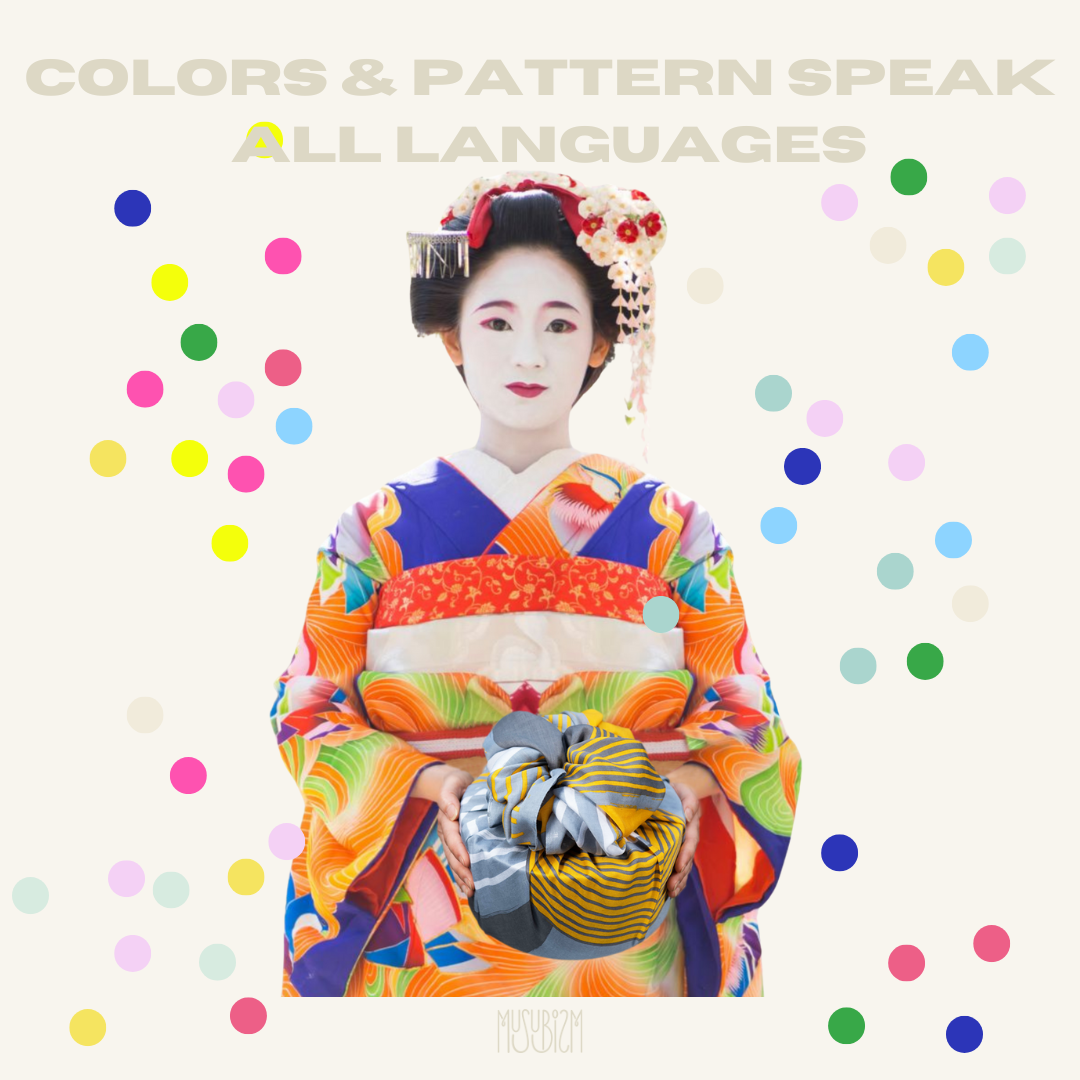
Furoshiki and the World’s Fabric Culture—The Wishes and Prayers Woven into Colors and Patterns
Colors and patterns have the power to influence our emotions. In Japan, furoshiki often features traditional auspicious motifs and meaningful colors, embodying wishes and prayers. However, the idea of embedding meaning into fabric is not unique to Japan. Across the world, different cultures have fabrics with symbolic colors and patterns, each carrying stories and emotions.
Thinking about these connections alone excites me. This is the same feeling that drives Musubism—the joy of bringing furoshiki into modern life while honoring tradition.
In this article, I will explore the meanings behind the colors and patterns of Japanese furoshiki and draw parallels with global fabric cultures. By understanding these connections, we can appreciate how fabric becomes a bridge between people, traditions, and personal identity.
1. The Meaning of Colors and Patterns in Japanese Furoshiki
① The Symbolism of Colors
Each color used in furoshiki carries a specific meaning, often reflecting wishes for well-being and happiness.
-
Red: Protection, vitality (used for celebrations)
- Global Parallel: Chinese red fabric (used in weddings and New Year celebrations), Indian red sarees (symbolizing prosperity)
-
Indigo: Honesty, longevity (traditional indigo-dyed furoshiki)
- Global Parallel: African indigo-dyed cloth (symbolizing nobility), Indonesian batik (used in traditional ceremonies)
-
Purple: Nobility, sacredness (once reserved for aristocracy in Japan)
- Global Parallel: Roman emperors’ purple robes, the royal purple of European monarchies
② The Symbolism of Traditional Patterns
-
Cranes and Turtles: Symbols of longevity (often seen in wedding gifts and elder celebrations)
- Global Parallel: Korean wedding garments featuring cranes, Chinese mythology where cranes are linked to immortality
-
Asanoha (Hemp Leaf Pattern): Growth and protection (used in baby clothing and furoshiki)
- Global Parallel: Islamic geometric designs, Ghanaian kente cloth
-
Seigaiha (Blue Ocean Waves): Peace and eternal happiness (commonly used in celebratory furoshiki)
- Global Parallel: Persian tile wave motifs, Greek meander patterns symbolizing infinity
2. The Global Fabric Cultures and Their Connection to Furoshiki
Furoshiki is a uniquely Japanese wrapping cloth, but similar traditions exist worldwide. Many cultures use fabric not just for practical purposes but as a way to express emotions and beliefs.
① Sarong (Indonesia, Malaysia)
- Use: Worn as a skirt, scarf, or head wrap
- Features: Batik-dyed patterns symbolizing life and nature
- Connection to Furoshiki: Multi-functional, carrying traditional motifs with deep meanings
② Pagne (West Africa)
- Use: Clothing, baby carriers, wrapping fabric
- Features: Vibrant colors and bold patterns (birds, fish, geometric designs)
- Connection to Furoshiki: Patterns reflect individuality and beliefs, much like furoshiki’s auspicious motifs
③ Kente Cloth (Ghana)
- Use: Worn in ceremonies and significant occasions
- Features: Bright colors and geometric patterns, each symbolizing a specific meaning
- Connection to Furoshiki: Colors and patterns express values and wishes, similar to the role of furoshiki in Japanese culture
④ Kanga (East Africa)
- Use: Worn as skirts, scarves, and baby wraps
- Features: Printed with Swahili proverbs and meaningful messages
- Connection to Furoshiki: Similar to how Japanese furoshiki sometimes feature kanji characters like “fortune” or “happiness”
3. Furoshiki as a Connection to Global Fabric Traditions
Furoshiki, like traditional fabrics from around the world, is more than just a piece of cloth—it carries history, emotions, and personal identity.
For me, furoshiki is an essential companion, especially when traveling or hiking. When I visit unfamiliar places, I always bring my favorite furoshiki. It’s a small but meaningful piece of home that I can carry with me. Just having it nearby gives me a sense of comfort and belonging, no matter where I am.
This feeling isn’t unique to me. Across cultures, people wrap themselves in fabrics that represent their identity, heritage, and wishes. Whether it's a Ghanaian kente cloth, an Indonesian batik, or a Japanese furoshiki, fabric becomes a way to stay connected to oneself and one’s culture.
Thinking about this connection between furoshiki and global fabric traditions fills me with excitement. Musubism creates furoshiki with this very spirit in mind—bringing tradition into modern life while allowing each person to express their uniqueness.
By using furoshiki, we not only honor Japanese tradition but also connect with the world’s rich fabric cultures. How about wrapping your thoughts, wishes, and identity in a furoshiki of your own?
